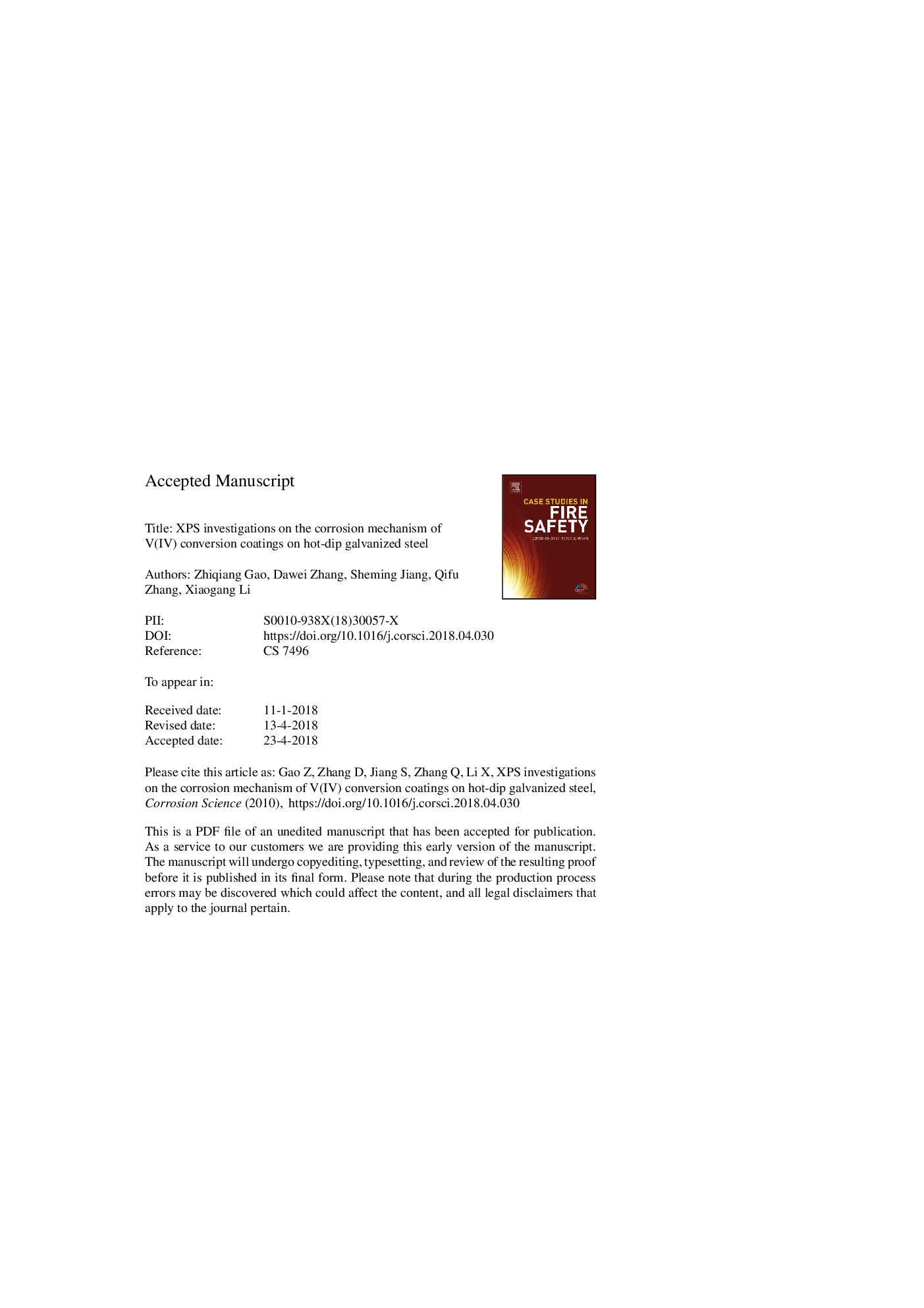| Article ID | Journal | Published Year | Pages | File Type |
|---|---|---|---|---|
| 7893269 | Corrosion Science | 2018 | 13 Pages |
Abstract
The corrosion mechanisms of a vanadyl oxalate (VOC2O4) conversion coating on hot-dip galvanized (HDG) steel were clarified as using VOC2O4 as an alternative to chromate has not yet been examined. X-ray photoelectron spectroscopy (XPS) was utilized extensively for studying the elemental composition and doping level of coatings. Scanning Kelvin probe (SKP) technique was used to investigate the change in surface potential of HDG. Corrosion behavior of the conversion coating was investigated using electrochemical impedance spectroscopy (EIS) measurements. With 10â¯s of dipping, V(IV) (tetravalent vanadium) was present in coating layers at a level of 80 at% to total V while V(III) (trivalent vanadium) at a level of 20 at%. During exposure in the desiccator, partial V(III) translation to V(IV) increased V(IV) concentration to 83 at%, due to oxidation by the ambient oxygen. V(IV) has a cathodic inhibition in the corrosion of HDG. An enhanced corrosion performance of the coating was achieved by the increase in V(IV) concentration in coating layers over exposure time. Nevertheless, during neutral salt spray (NSS) V(IV) vanished and only V(III) retained a certain amount that played a major role in the corrosion inhibition of HDG.
Related Topics
Physical Sciences and Engineering
Materials Science
Ceramics and Composites
Authors
Zhiqiang Gao, Dawei Zhang, Sheming Jiang, Qifu Zhang, Xiaogang Li,
